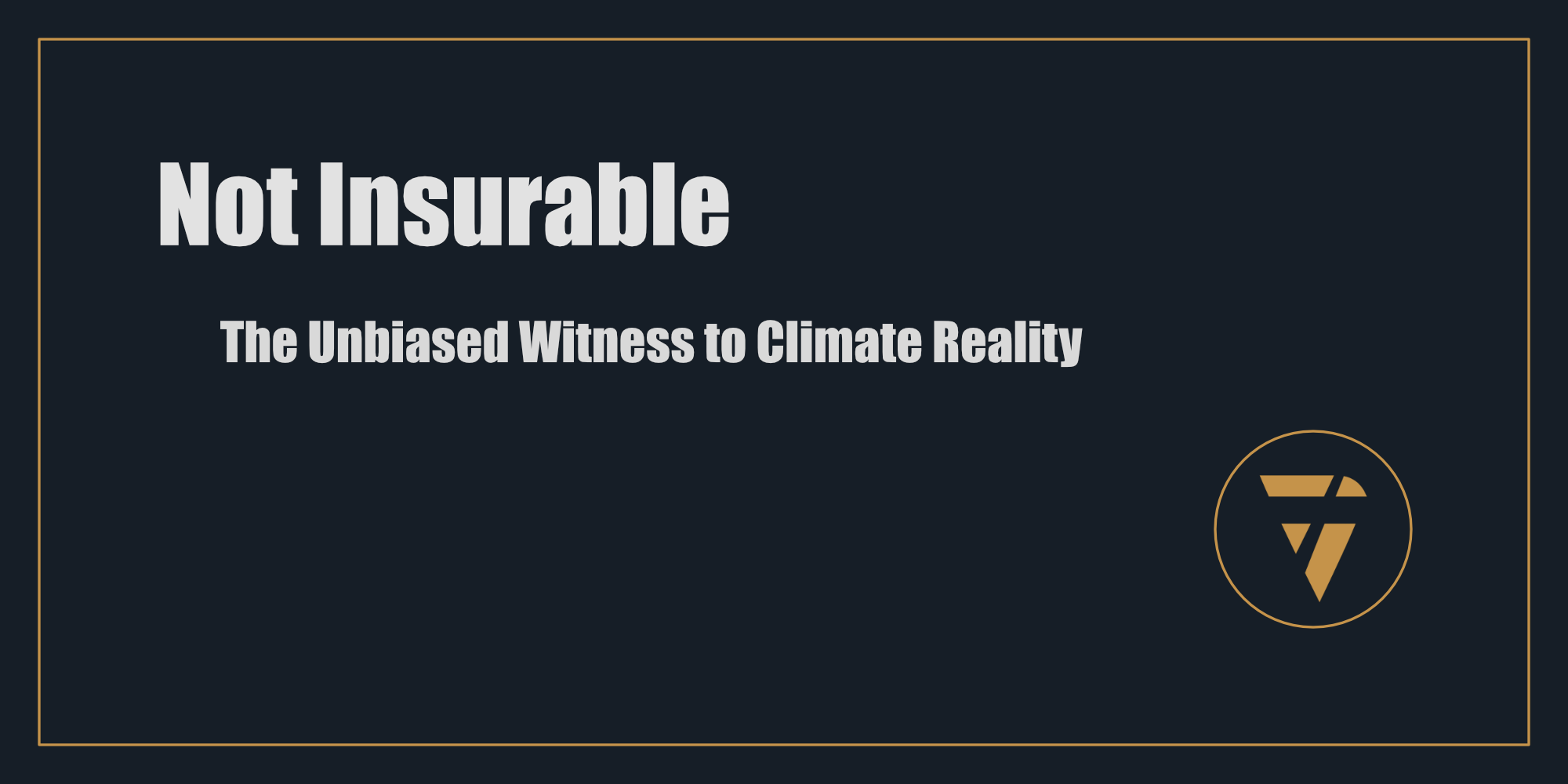Not Insurable
The Unbiased Witness to Climate Reality

What if the definitive proof of our climate crisis wasn’t in scientific papers, government reports, or public opinion, but in the raw, unflinching calculations of the insurance industry? For decades, I’ve said that insurance is the indicator of reality—and now, it’s impossible to ignore.
The Story Insurance Tells
Insurance is the most pragmatic observer of our world. It doesn’t care about politics, religion, or ideology. It operates on numbers, probabilities, and hard facts. The core of its business is predicting risk, and pricing it appropriately. Over the past ten years, this cold calculation has painted a stark picture: the costs of climate-related disasters are skyrocketing. From hurricanes in the U.S. to wildfires in Australia, the financial toll is no longer theoretical; it’s breaking balance sheets.
Why? Because insurance isn’t guessing. It’s reporting. Climate models may be debated, but actuarial tables don’t lie. When premiums rise, exclusions expand, and regions become uninsurable, it’s a clear signal. The industry is telling us what we’ve ignored for too long: the climate crisis isn’t coming. It’s here.
Proof Without Emotion
Insurance operates like a barometer of truth, one that measures the consequences of inaction with brutal honesty. Flood zones are redrawn. Crop insurance disappears. Whole neighbourhoods are declared uninsurable, leaving homeowners with no options and no equity. These are not speculative changes, they’re the direct result of what the climate is doing to our world, today.
While governments debate policies and industries calculate profits, insurance companies have quietly been recalibrating for the future they see unfolding. The result? A systemic shift where risk no longer supports the status quo. Some coastal towns, entire industries, and even nations are financially underwater before the seas have physically engulfed them.
Why It’s Too Late
For years, insurance sounded the alarm in a language most chose to ignore: rising costs. Now, those costs are untenable. Cities that once thrived on the promise of low premiums and financial safety nets are grappling with economic collapse. Business continuity has become a myth in areas devastated by relentless natural disasters. And here’s the brutal truth: no financial product, however innovative, can insure against planetary collapse.
We were warned, not just by scientists, but by the very industry designed to mitigate risk. And we failed to act. Now, the consequences are compounding, and no bailout will suffice.
What Can We Learn?
If insurance is the ultimate reality check, we must stop treating it as an afterthought. Its rising premiums, shrinking coverage, and growing exclusions are a map to the new world order. We need to read it and react. Governments and businesses must integrate this reality into their planning, and individuals must confront the vulnerabilities that can no longer be ignored.
This is not just about rebuilding after the storm, it’s about reshaping society to prevent the next one.
So, what story does your own insurance tell? Has it excluded you, raised your costs, or flagged your neighbourhood as high-risk? And if the industry’s agnostic stance on climate doesn’t shake us into action, what will? Crop insurance is what you should find terrifying.
This Substack is reader-supported. To receive new posts and support my work, consider becoming a free or paid subscriber.
This is what I’m working on. Tell me what you think, I enjoy the conversation! Subscribe and follow the work in real time.
Thanks!
B
Insurance doesn’t care about your politics or beliefs, it only calculates risk. The numbers are clear: climate change isn’t a debate; it’s a financial collapse in slow motion. When premiums rise and coverage disappears, the truth is undeniable.
PS -





